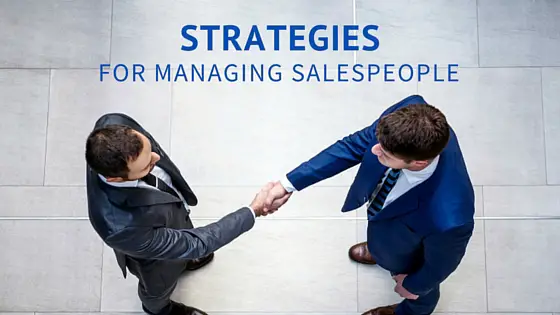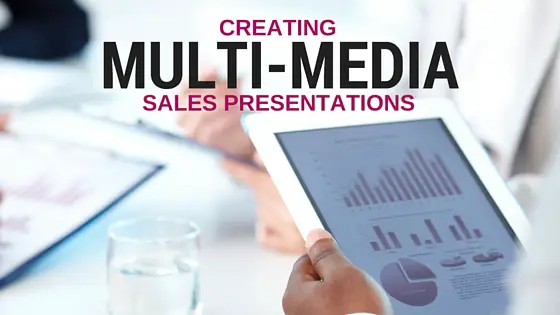Shweiki Media teams up with experienced entrepreneur and business owner, Karl Scheible, from Sandler Training to present a must-watch webinar on qualifying the sale with prospective buyers.
Review of the Buyer’s System
In a previous webinar, which can be found here, the process a professional buyer goes through during a sale is covered. Buyers have a system that has evolved over the years that has effectively neutralized traditional sales.
There are three common objections that a salesperson typically hears:
- “I need to think it over.”
- “Your price is too high.”
- “I need to run your proposal by the committee before I can make a decision.”
Whenever one hears these three things, it means that he or she has lost control of the call. Why does a salesperson hear these objections? There are several mistakes the salesperson might have made that resulted in the buyer objecting:
- Pushing features and benefits
- Mentioning the price too early or to late
- Failure to skillfully negotiate access to the other stakeholders
Sandler Philosophies
- “Qualify hard and close easy.” One might think Sandler’s qualification process is stringent, but because of the strict criteria, Sandler knows the time, cost, opportunity cost, and the energy it takes to prepare a presentation or proposal. When closing, it’s better to save that time and money, so people should be eliminated early.
- “A prospect who is listening is not a prospect at all.” 70% of the time on call, the prospect should be talking and the salesperson should be listening; the other 30% of the time, the salesperson should be talking and the prospect listening. Normally, one sees that reversed. If a salesperson thinks they’ve asked too many questions on a call, then they should ask ten more questions. The job of a salesperson is to collect information, not dispense it.
- “You cannot sell anybody anything—they must discover that they want it.” All in all, the goal is for salespeople to get out of the business of convincing people or putting pressure people to buy something. By running the Sandler qualification process, prospective buyers will discover that they want it all on their own and that makes the sale a lot easier.
3-Step Qualification Process
There are three major steps to qualify a sale.
- Pain
- Investment (Budget)
- Decision-Making Process
Step 1: Pain
The concept of pain is used in a lot of selling systems. It’s just like when doctors interview patients to find out what problems they are having in order for the doctors to administer the best possible care. Sandler does something very similar in that we want to uncover the problems buyers have and then understand the reasons behind those problems. Sandler also wants to know the financial and personal impact of buyer’s problems. If, in a careful interview, one can draw out answers to these questions, then one can have a sense of the level of commitment the buyer has to fixing those problems.
The most frustrating part with step one and pain is that if there is no pain, there is no sale. (Much like no pain, no gain.) For example, if the prospect is in pain but the salesperson is not uniquely qualified to fix that pain, then there will be no sale and the opportunity is gone. Other times, if the salesperson is uniquely qualified to fix a buyer’s pain but the prospect is not demonstrating the commitment to fix it, then there will also not be a sale.
The reason that pain is the first step in qualifying a sale is because if there is no pain, then it is best to get out of there.
Sandler has a concept called the pain funnel. A pain funnel is when a salesperson asks a lot of questions that are designed to pull out any problems a prospect is facing. The first thing any salesperson must do is find out if there is a compelling issue that the prospect is committed to fixing, because if it is not fixed, he or she will suffer adverse financial and personal impact.
Step 2: Investment
The second step in qualifying a sale is investment. Many salespeople will ask a prospect “How much is the budget?” or “Do you have a budget?” but Sandler does not like to approach it that way.
Prospects have to be willing and able to invest the time, resources and money. For example, I had a client that was giving away a software for free in exchange for 10% of the savings they were bringing. They became frustrated that they were not getting any adopters. They had thought that giving it away for free was a good deal but the cost of adoption and training was extremely expensive. It is best not to bring up investment until there is pain otherwise it makes no sense to bring up money.
Prospects have to be willing and able to invest the time, resources and money. It is best not to bring up investment until there is pain; otherwise, it makes no sense to bring up money.
Step 3: Decision-Making Process
The third and final step is the decision-making process. This is where many traditional salespeople will take shortcuts, which is not a good idea because buying things at the corporate or even the personal level can be amazingly complex. Sandler has a sequence of questions that are designed to uncover the prospect’s decision making process. These questions prove once and for all the prospect’s commitment to fix his or her problem.
The key question points one needs to hit are:
- When?
- Why?
- What?
- Where?
- How?
- Who?
It’s important to know where this decision is going to be made and how they are going to make it.
Selling System
The sale will not close if:
- There are no emotionally compelling reasons to solve the issues. Many times people have pain and an issue but there is no commitment to fix them.
- There is no willingness or ability to invest.
- One cannot gain access to the decision-makers.
- The buyer was less than honest. The selling system does not work with habitual liars.
Sandler is big on following the process because it gets them consistent results and no one will hear “I’ll think it over” or “Your price is too high.” The best companies follow the same system, methodology and language, because that is what facilitates a company’s growth.
Always follow a selling system because:
- There are consistent results
- There are predictable outcomes
- There’s a clear lesson learned
- It’s repeatable
- It’s transferable
- It’s efficient
TWEETABLE FACTS:







